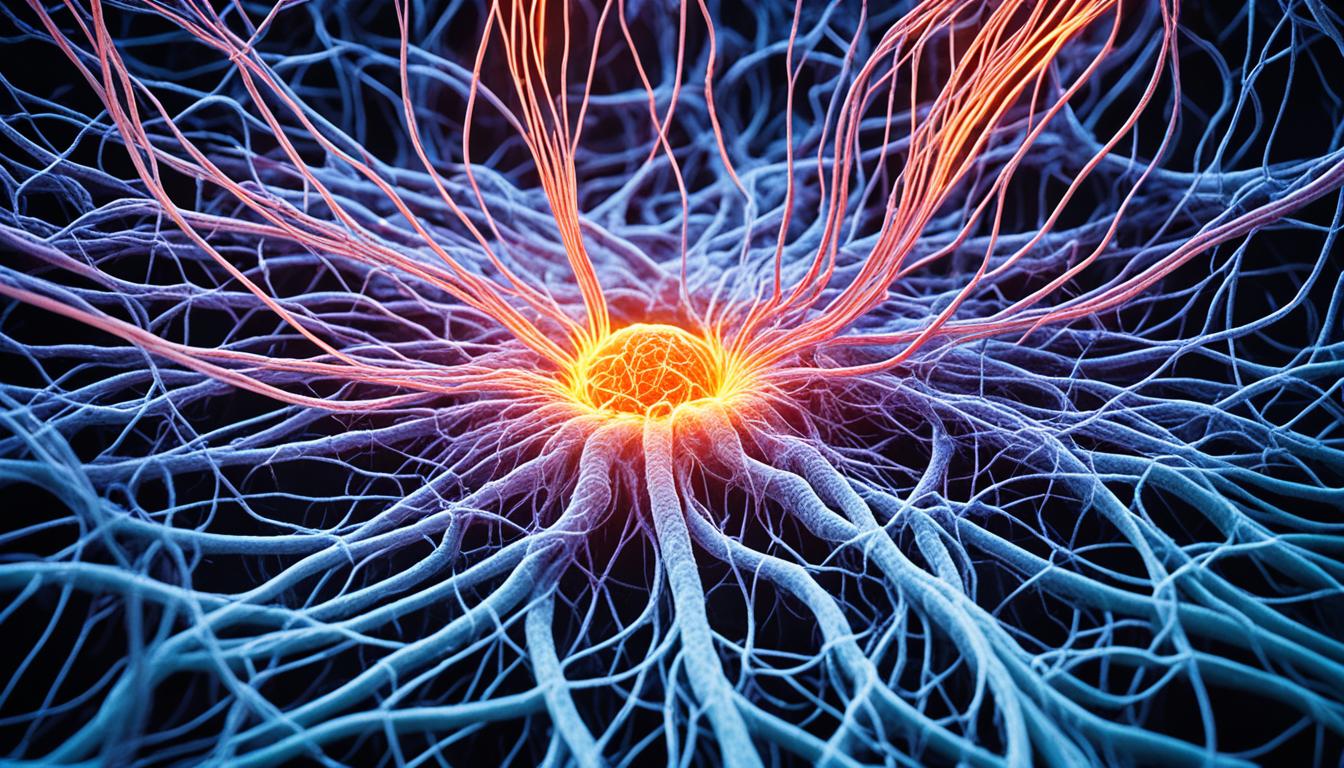When the peripheral nervous system gets damaged, it leads to peripheral nerve injuries. This system helps send signals between the brain, spinal cord, and the rest of the body. Damage to these nerves can cause many symptoms and problems with nerve function.
Different types of damages can show up as different symptoms. You might feel muscle weakness, uncontrolled muscle twitches, pain, or tingling. There could also be numbness or loss of feeling in the area. These issues might also affect your balance, coordination, and how your organs work.
Key Takeaways:
- Neuropathy impacts the peripheral nervous system.
- Symptoms like muscle weakness, pain, and loss of feeling can vary.
- Getting a timely diagnosis and managing the condition is important.
- Improving symptoms might be possible by treating the causes.
- Stem cell therapy is showing promise in nerve regeneration and recovery.
Treatment Options for Peripheral Nerve Injuries
Treating peripheral nerve injuries depends on what caused the problem and how serious it is. Fixing the underlying issue can help reduce symptoms and boost nerve regrowth. Below are some common ways to treat these injuries.
1. Medications
If you’re dealing with nerve injury pain and swelling, your doctor might give you medicine. This could be nonsteroidal anti-inflammatory drugs (NSAIDs) or analgesics to ease pain. They might also use certain anti-seizure drugs and antidepressants to help control nerve pain.
2. Physical Therapy
Recovering from peripheral nerve injuries often involves physical therapy. Therapists make exercise plans just for you to boost strength, ease stiffness, and improve balance. These moves can help your nerves work better and make you more coordinated.
3. Occupational Therapy
Occupational therapy is about getting back to daily activities. Therapists teach you ways to do self-care, work tasks, and housework. The goal is to make life easier and better for you.
4. Surgical Interventions
For severe nerve injuries, surgery might be needed. Surgeons can repair or graft nerves to make them whole again. They might also do nerve transfers, moving healthy nerve parts to fix lost functions.
5. Regenerative Medicine
New developments in regenerative medicine are helping with nerve recovery. Stem cell treatments, for example, are showing great potential in healing damaged nerves. There’s still a lot of research going on in this area for peripheral nerve injuries.
Remember, everyone’s treatment for peripheral nerve injuries is different. Your doctor will personalize your care. Starting treatment early and using multiple approaches can make a big difference. It can help you get back to daily life and feel better, even after a nerve injury.
Conclusion
Dealing with nerve damage is very important for people with peripheral neuropathy. This condition causes pain, muscle weakness, and loss of feeling. It can really change a person’s life. Getting diagnosed early and managing it right is key to helping these patients.
First, doctors need to diagnose the nerve injury. They do this by checking the person’s nerves carefully. Then, they design a treatment plan just for them.
After finding the nerve damage, managing it right is crucial. This can lead to less pain and better nerve function. Doctors may use medicine, physical therapy, or change the patient’s lifestyle. New treatments like stem cell therapy also offer hope for repairing nerves.
To sum up, finding and treating nerve injuries early is vital. With the right focus on diagnosis and treatment, patients can enjoy life more. Their symptoms can improve, and they can feel better overall.

